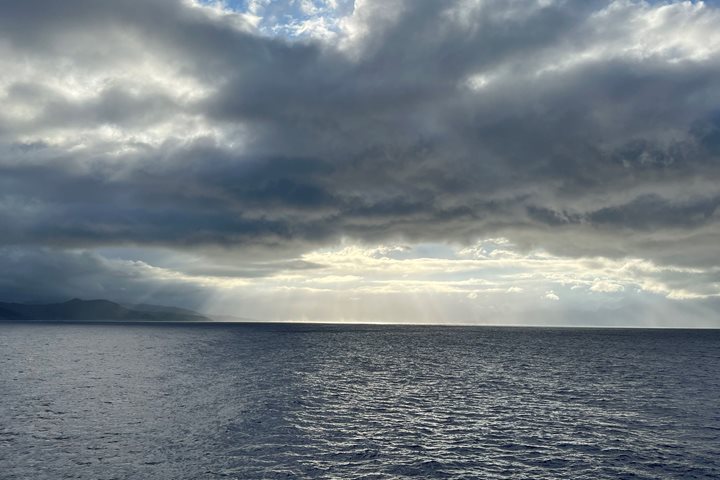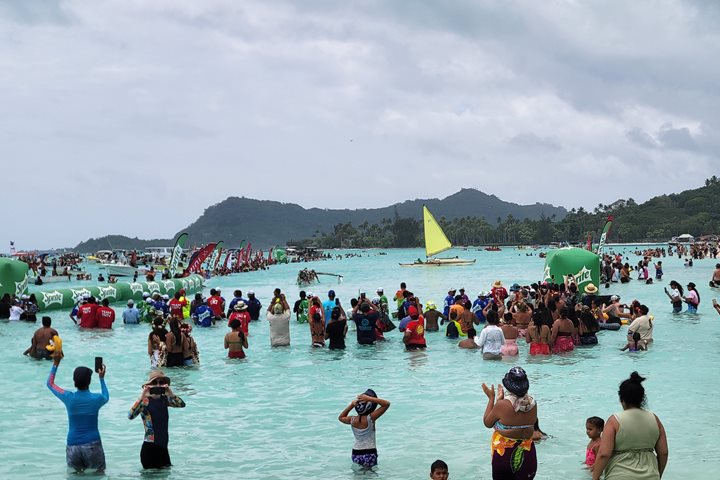Today, guests aboard National Geographic Resolution spent the day at Niue Island, a small island located south of Samoa. The island consists of an uplifted coral reef that is about ten miles in diameter; it is surrounded by 100-foot limestone cliffs. The island is a territory of New Zealand with scuba diving as the main tourist draw. The population is only 1,600, but 90% of Polynesian Niuens live in New Zealand.
In the morning, we toured the coastal landmarks of Niue. We visited several coves with white sand, turquoise water, and limestone cliffs that were eroded into notches by intertidal creatures. We visited a large limestone cave complex with huge stalactites hanging down from the ceiling and stalagmites rising from the cave floor. The cave goes all the way down to the ocean, where it merges into sea caves. This famous cave is where the original Polynesian settlers arrived and found a route through the towering limestone cliffs. Finally, our morning tour concluded at a chasm where an arm of the ocean formed a huge pool, and most of the guests went swimming in the refreshing blue water.
In the afternoon, we split up into two groups. One group visited a vanilla bean plantation to learn all about this orchid and how it must be hand-pollinated and picked. The other group went for a walk in the forest to look for the huge coconut crab that is native to Niue. These three-foot-wide land crustaceans are omnivorous but love coconuts. The high point was when we got to hold the ten-pound animals without getting pinched by their huge claws.
During recap, we learned about the geology of Niue, the biology of coconut crabs, and our plans for tomorrow. After dinner, we watched a BBC documentary on wild canines filmed by our National Geographic photo expert Nitye Sood. What an excellent way to end such an adventurous day.







